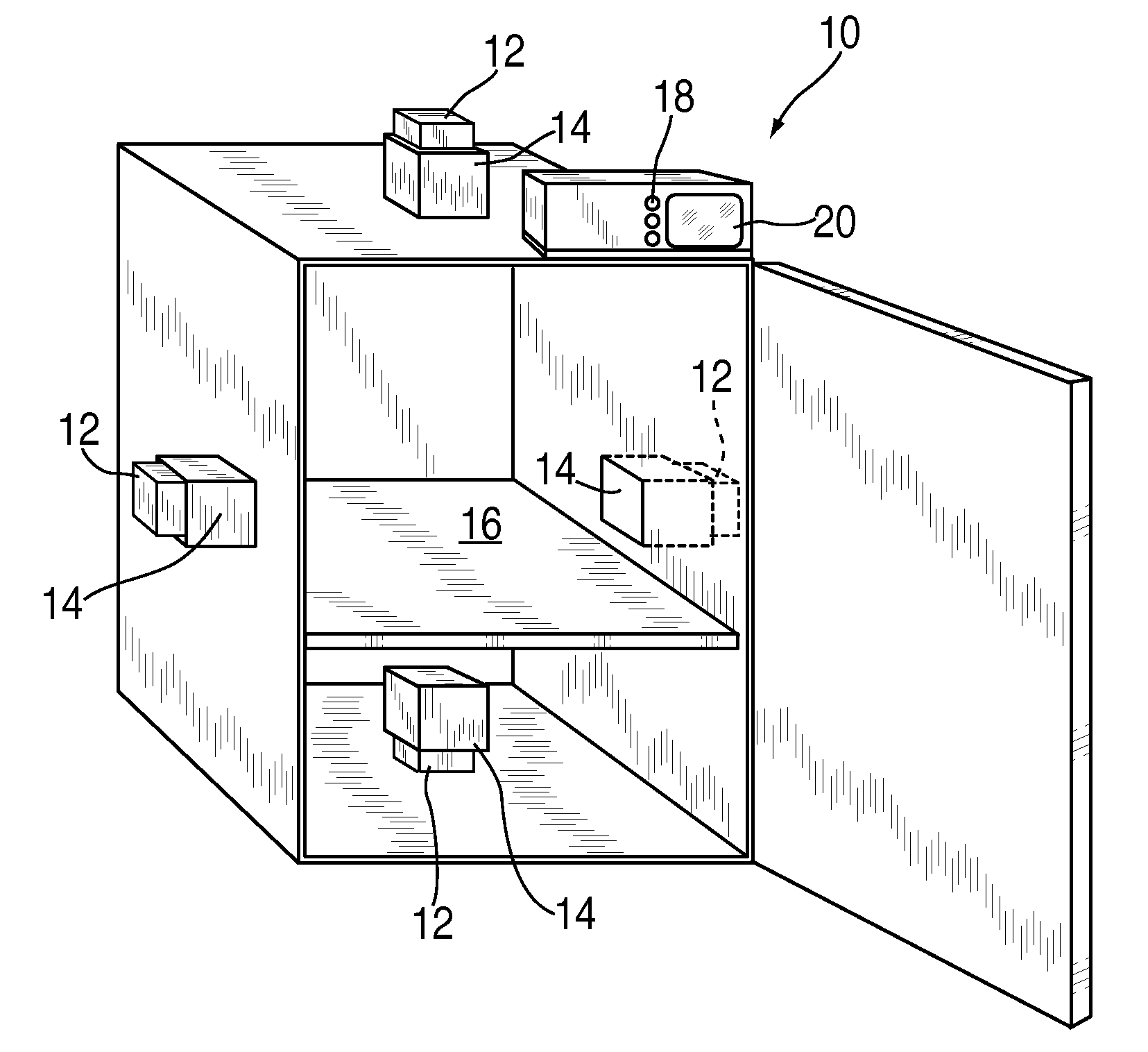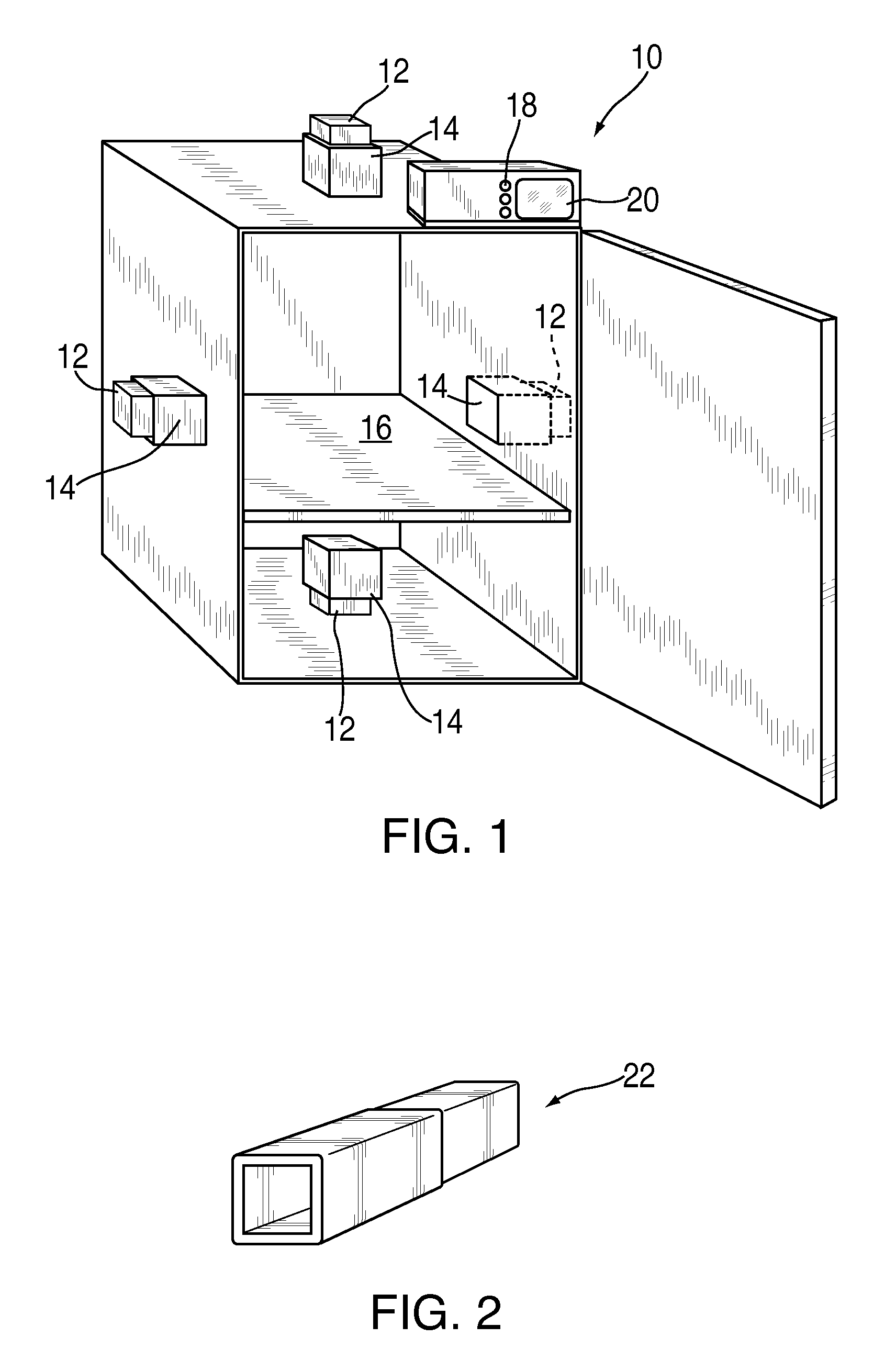Microwave disinfection and sterilization
a technology of micro-waves and disinfection, which is applied in the field of micro-wave disinfection and sterilization, can solve the problems of the patient's discomfort, and the patient's long suffering, and the environment is at a high risk for the spread and cross-contamination of microorganisms, so as to achieve rapid and efficient disinfection or sterilization of food or non-food objects without adversely affecting the physical characteristics of the obj
- Summary
- Abstract
- Description
- Claims
- Application Information
AI Technical Summary
Benefits of technology
Problems solved by technology
Method used
Image
Examples
example 1
Treatment of Fabric
[0081]Hospital linens are continually in contact with bodily fluids and tend to be a rampant breeding ground for microorganisms. Microwave radiation that is homogeneously distributed and can be controlled in such an automated manner as to deliver only the precise energy needed to sterilize the object is a cost effective and reliable way to decrease nosocomial infections.
[0082]FIG. 11 is a bar plot that shows the decline in the MRSA population from an initial MRSA count in MRSA inoculated cotton bedsheets of about 5 log 10 cfu / cm2 decreased to 0.6 log 10 cfu / cm2 after a 40 second microwave treatment.
[0083]The plot also reveals a reduction from 5 log 10 cfu / cm2 to 0 log 10 cfu / cm2 after an 80 second treatment. The difference between a 5 log 10 cfu / cm2 to a 0.6 log 10 cfu / cm2 count represents a greater than 99.99% reduction in the MRSA population. This indicates the 40 second microwave treatment of cotton fabric to be very effective in eliminating MRSA, and the 80 se...
example 2
Cantaloupe, Jalapeno Peppers, Dog Food, and Peanuts Inoculated with Salmonella and Treated
[0086]In this controlled experiment, fresh cantaloupes were obtained from local grocery store with no noticeable blemishes. The cantaloupes were allowed to return to room temperature overnight. Each cantaloupe was submerged into a 3 strain Salmonella inoculum (4 Liters) and agitated by stirring with a glove-covered hand for 5 minutes to ensure uniform inoculation. Cantaloupes were placed on sterile stainless steel drying racks under a bio-safety cabinet for 1 hour to allow for drying. Untreated cantaloupes were subject to analysis for initial level of contamination of Salmonella.
[0087]Treatments were: Control (no treatment); 1 minute, 30 seconds stationary; 1 minute, 45 seconds stationary; 2 minutes—1 minute stationary: 1 minute (turning at mid point); 3 minutes—1 minute, 30 seconds stationary: 1 minute, 30 seconds (turning at mid point). To enumerate attachment of Salmonella, a stainless stee...
PUM
| Property | Measurement | Unit |
|---|---|---|
| frequency | aaaaa | aaaaa |
| energy | aaaaa | aaaaa |
| total energy | aaaaa | aaaaa |
Abstract
Description
Claims
Application Information
 Login to View More
Login to View More - R&D
- Intellectual Property
- Life Sciences
- Materials
- Tech Scout
- Unparalleled Data Quality
- Higher Quality Content
- 60% Fewer Hallucinations
Browse by: Latest US Patents, China's latest patents, Technical Efficacy Thesaurus, Application Domain, Technology Topic, Popular Technical Reports.
© 2025 PatSnap. All rights reserved.Legal|Privacy policy|Modern Slavery Act Transparency Statement|Sitemap|About US| Contact US: help@patsnap.com



